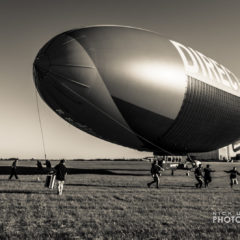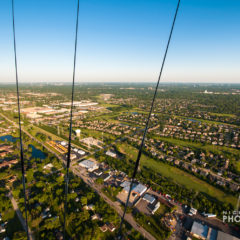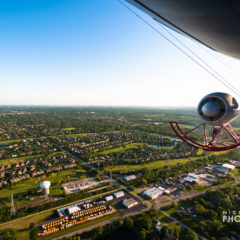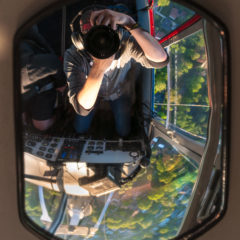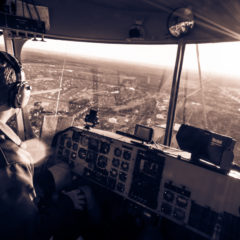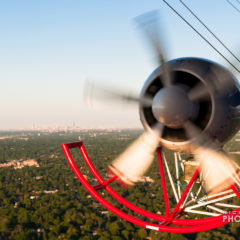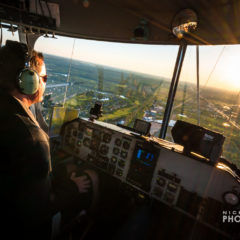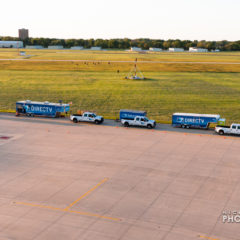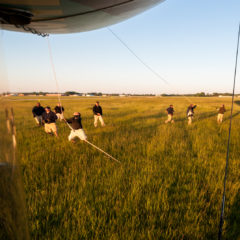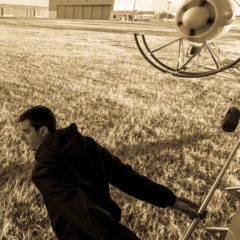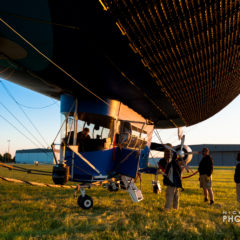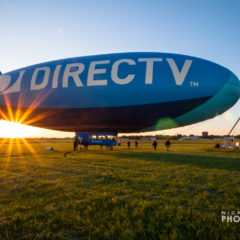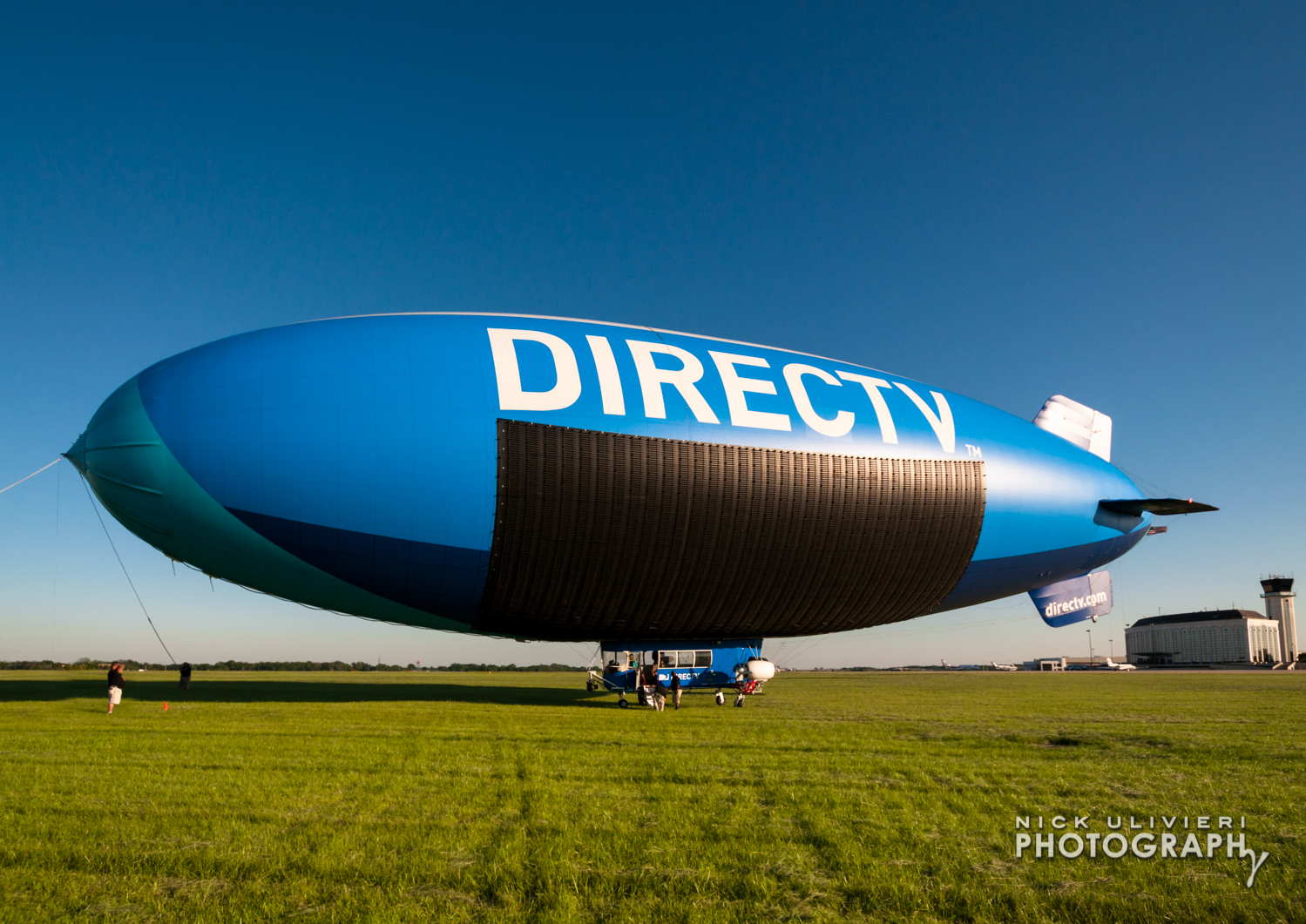
Take a ride in the DIRECTV Blimp
Since I first tweeted about it, everyone has been asking: “How did you get to ride on the DIRECTV Blimp??” Here’s the story behind it, and a ton of photos.
Last summer, I saw the DIRECTV Blimp circling around the South Side of Chicago. I scurried onto my balcony with my telephoto lens and started shooting. I shared my photos with them on Twitter (Go follow them: @DTVblimp & Facebook) and we’ve been friends ever since. Later that day, they sent me a direct message asking if I knew any local helicopters that could provided aerial coverage for them. As it turned out, they were low on extra helium and had to head back to their base in Florida. Worse, they were scheduled to provide aerial coverage for two different events in the city that weekend. Lucky for them, I knew someone, put them in contact and the crisis was averted. As a reward for my help, the DIRECTV Blimp team asked if I’d like a ride next time they were in town. Naturally, I took the offer.
Fast forward to last weekend and the DIRECTV Blimp is in town for a busy weekend covering Cubs and Sox baseball. I welcomed them back to Chicago with another tweet and a photo, and next thing you know, we’re scheduling a ride for Friday evening
Operated by VanWagner Airship Group, the airship wing of VanWagner Communications, a major outdoor advertising company, the DIRECTV Blimp is a massive 170,000 cubic feet of space and the gondola is capable of carrying up to eight people and is the largest in VanWagner’s fleet. On one side of the blimp resides a giant 2,100 square foot LED board whose massive weight makes the airship list a bit to one side. The DIRECTV Blimp is currently the only airship in the world with this LED screen technology and has held that title for over 5 years. Pretty cool, huh?
After I arrived at DuPage Airport, I called my contact Tim, and he picked me up for a quick drive to the end of the airfield where the blimp and crew was stationed. As we walked into the field I could see the crew of about 14 awaiting the arrival of the blimp, which had been flying some “exposures” in the Western suburbs after providing aerial coverage for the afternoon Cubs game. In the distance, above a small grouping of tall trees, a blue orb appeared. It continued to grow in size as it slowly approached the landing point marked out by the ground crew. While we waited, I was held back from the touchdown area as a safety precaution. Turns out, landing a blimp is a tricky and dangerous maneuver to pull off. Not only does the airship lack precision control steering as say, a Formula 1 race car, but a quick shift in wind direction can send the craft careening into the very crew members attempting to arrest it.
The team spread out in a V-shape to signify wind direction to the pilot so that he could land into it. As it got closer, I could hear the engines rev as the pilot expertly throttled the engines up and down to swing the whole craft around so it could land into the light wind. The lines on the front were within reach and the crew quickly went into action to ensure blimp was solidly on the ground. Moments later, I jogged to the gondola, hopped in, buckled my seatbelt, met my pilot Jeff, and we were off the ground within minutes of initial touchdown.
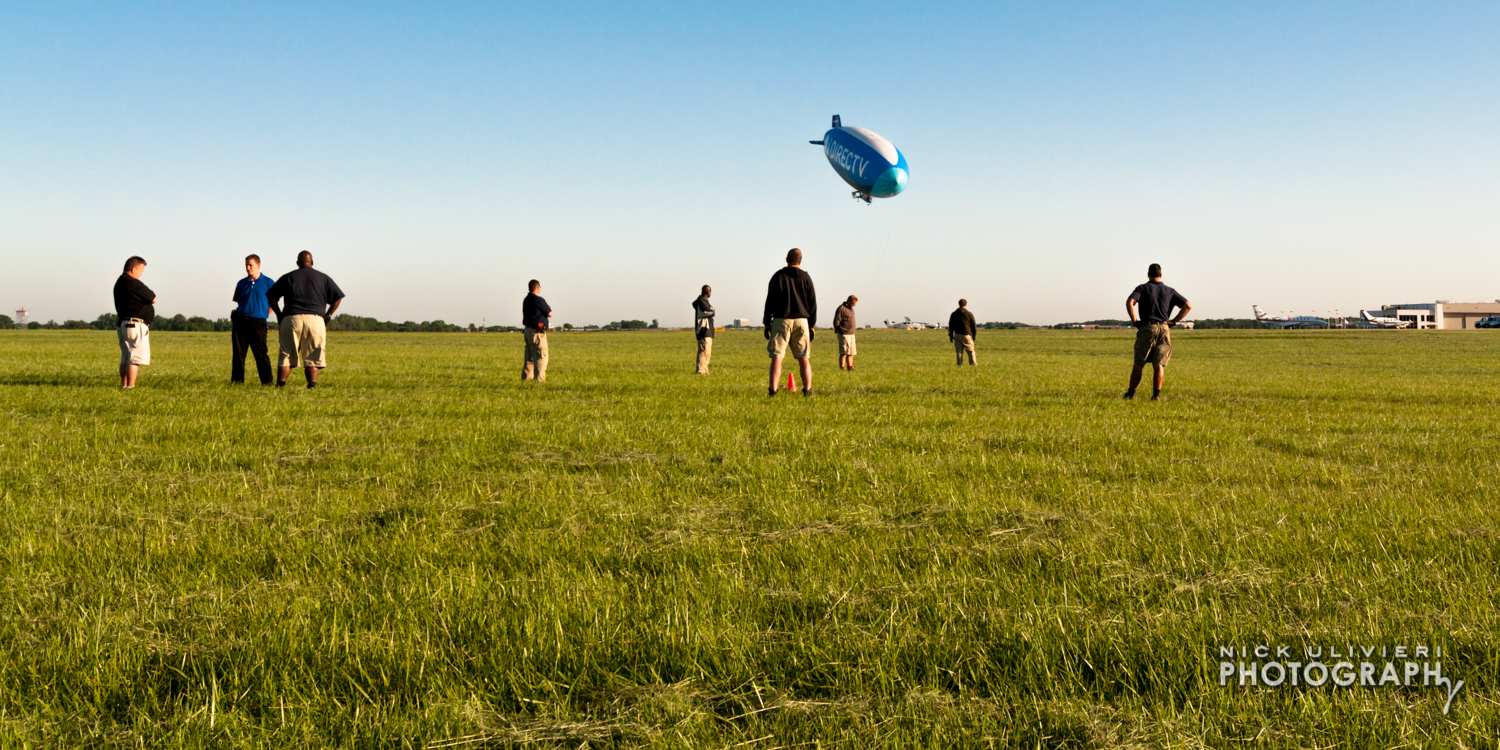
Jeff cranked up the throttle and we effortlessly lifted into the sky. We ascended quickly and I stuck my lens out the window and started shooting. Yes, the window was open. The top speed of the DIRECTV Blimp is about 45mph, and we were cruising around 25-30mph, so an open window felt a lot like it does when you’re driving in a car with the window down.
What really surprised me was the lack of a joystick or typical airplane-like controls. While there were foot pedals that adjusted the rear rudder to turn left or right, the major control mechanism was a large wheel to the pilots right, down next to the seat. This wheel adjusted the rear elevators and pushed the nose up and down to control altitude. One of the more exciting maneuvers we performed, for a blimp at lest, was the “nosedive”. Jeff spun the wheel and the airships nose tipped way forward and it seemed like we were headed straight for the ground. In reality, it was only about 30 degrees downward descent, but it felt a bit like cresting the apex of a rollercoaster’s first drop.
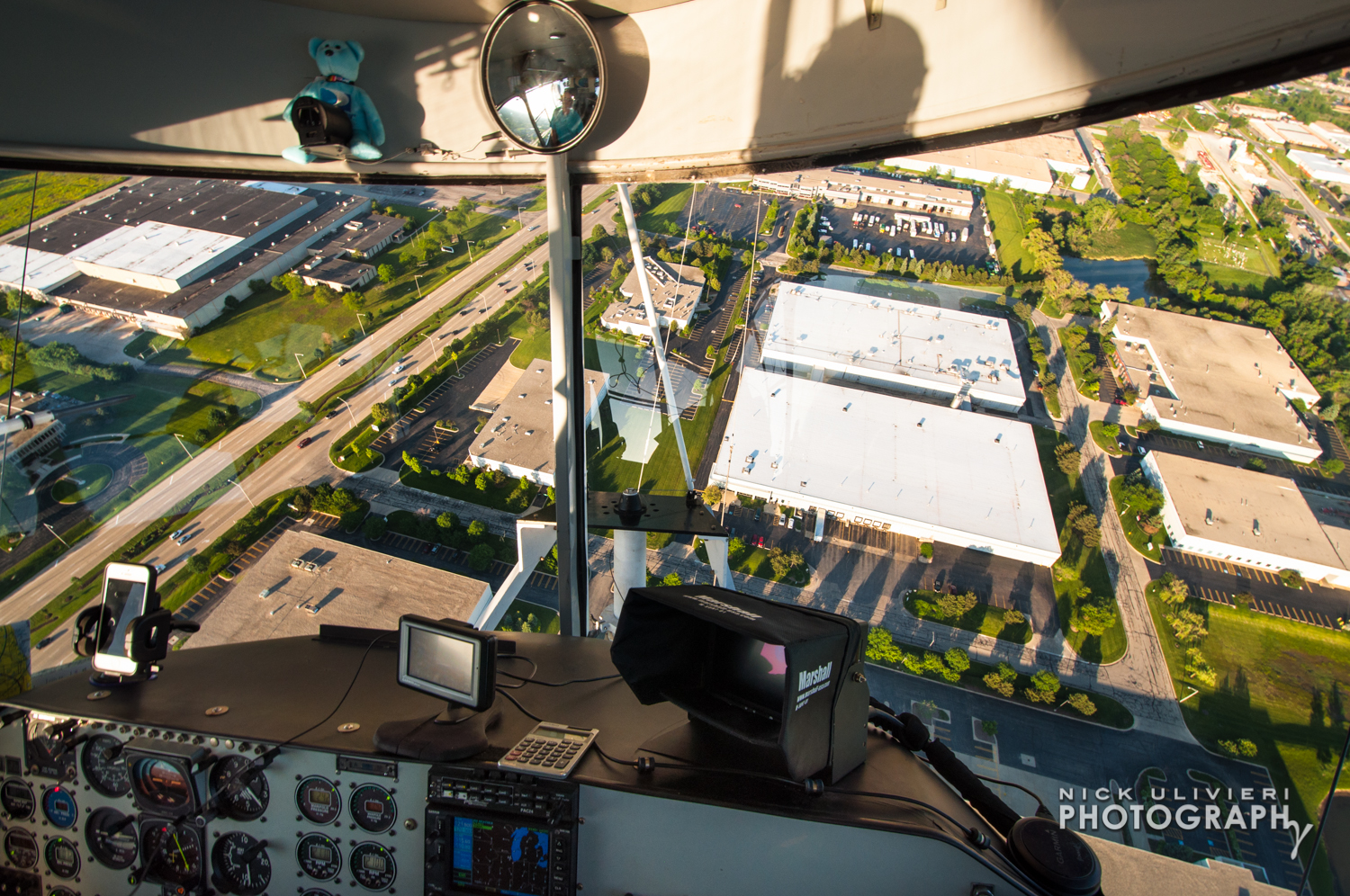
The views of the Western suburbs were spectacular from our cruising altitude of about 2,500 feet, and the weather was perfect for flying. At this time of day the thermal activity was relatively calm which made for an exceptionally smooth flight. As the mid-day sun heats the earth surface it warms the air directly above it. Because of different materials dotting the earth’s surface, this heating is uneven, so some columns of air rise faster than others. As Jeff explained, flying through these thermals can lead to a less than comfortable flight as the blimp vertically snakes through the air.
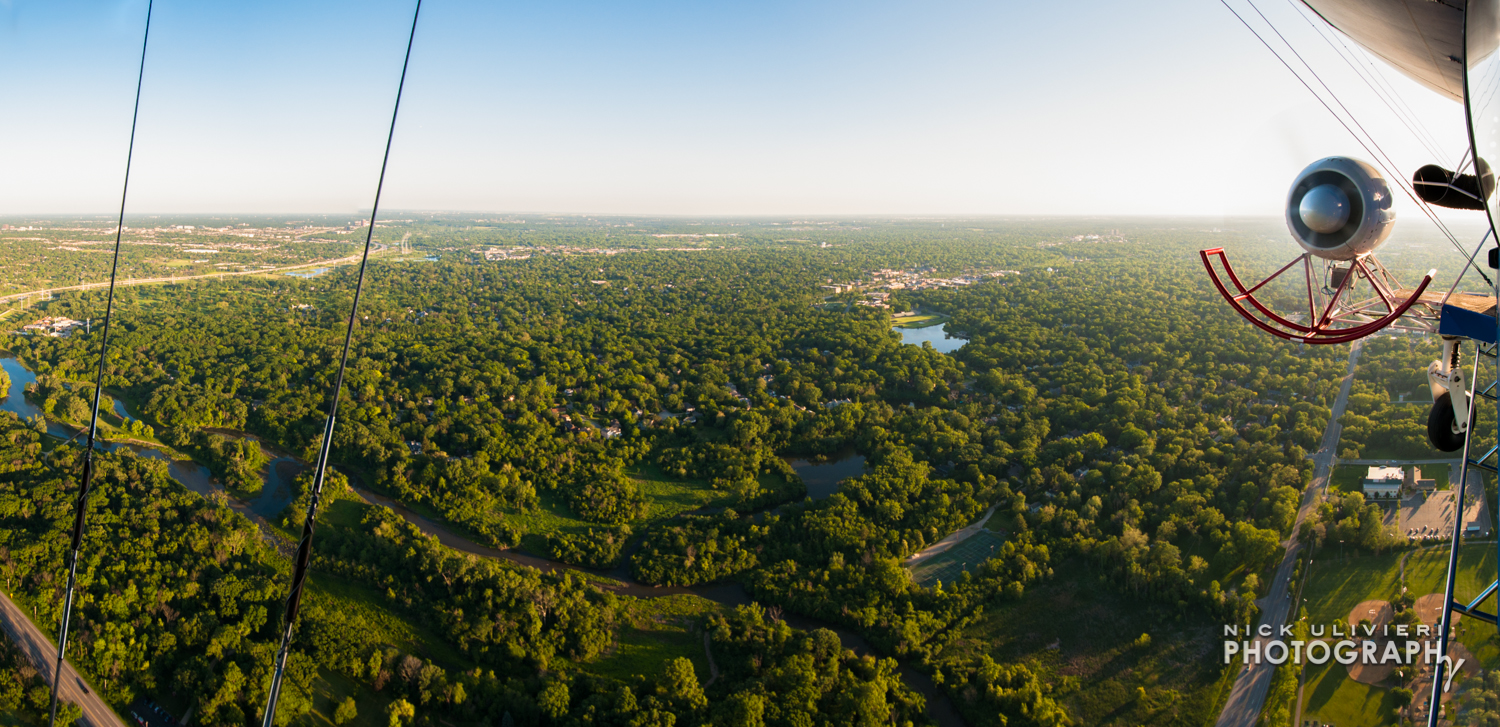
We continued due East towards Chicago. Though we didn’t have enough time on this flight to make it all the way into the city, I desperately wanted an aerial skyline from afar. As best as I can tell from visual landmarks and some quick mapping via Google Maps, I’m guessing we had to make the turn to head back once we reached Villa Park, approximately 13 miles from the DuPage Airport. At this point Jeff made a nice and slow left hand turn so I’d have a clear shot of the skyline from my window which was still an impressive 20 or so miles away. Luckily, it was a pretty clear day and my 200mm telephoto did the trick. There was a slight haze, but all things considered, the weather couldn’t have been much better if we planned it.

After the turn it was a relaxing ride back to the DuPage Airport. It wasn’t too long before I could see the airport in the distance. While I was impressed with the landing maneuvers I saw earlier, I gained a whole new appreciation for the finesse needed to bring a ship of this size into port. We came in from the east and descended to what felt like 100 feet above one of the airports runways – headed straight towards a terminal building. About 200 yards to my right I could see the team lined up in the “V” in the same grassy field we launched from. As we seemingly skimmed the ground, we made a smooth tight right-hand turn to face the wind. Jeff cut the engines, or at least throttled completely down, and we floated right towards a perfect landing. With the ropes in the recovery team’s control and pulled taught, they expertly attached the airship to its mooring mast and it was safe for us to exit. The flight was done, and was experience I’ll never forget. Beautiful night, smooth ride, and tons of photos. Can’t ask for much more.
Before I close, I want to thank the entire DIRECTV Blimp crew for making this flight happen. It takes a team of 16-20 experienced members to support the blimp up to 345 days per year. The crew will travel approximately 45,000 miles as they work to cover 90-100 TV events. As I learned, it’s a job that takes dedication, patience, and focus. So, thanks again – I hope you all had a great time in Chicago!
-Nick
P.S. Jeff, if you’re reading this, I hope my Blackhawks can avenge your Penguins’ loss to the Bruins. I know they’ll do all they can to keep the Cup from heading to Boston.

